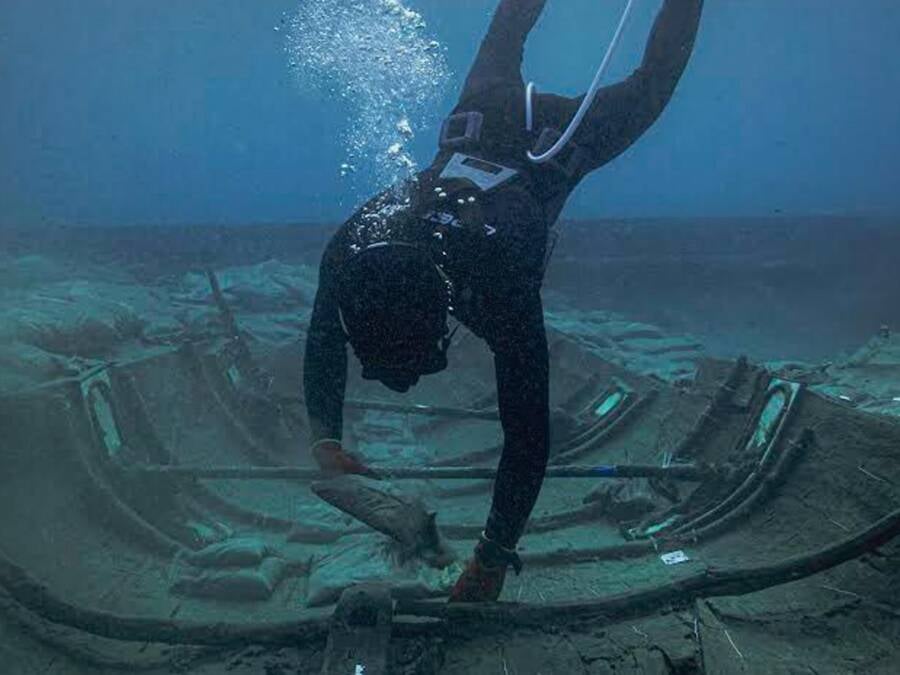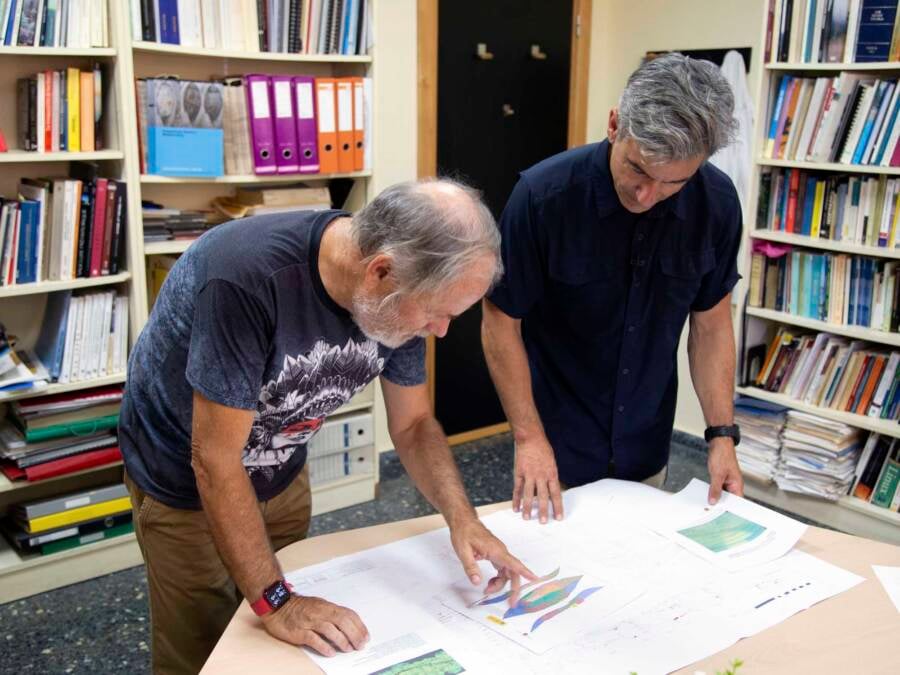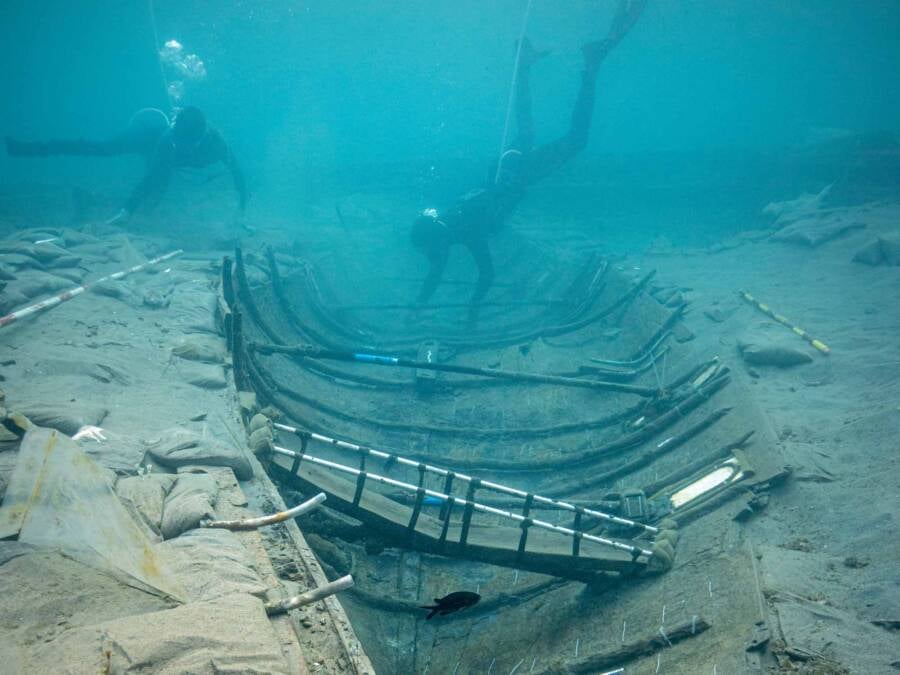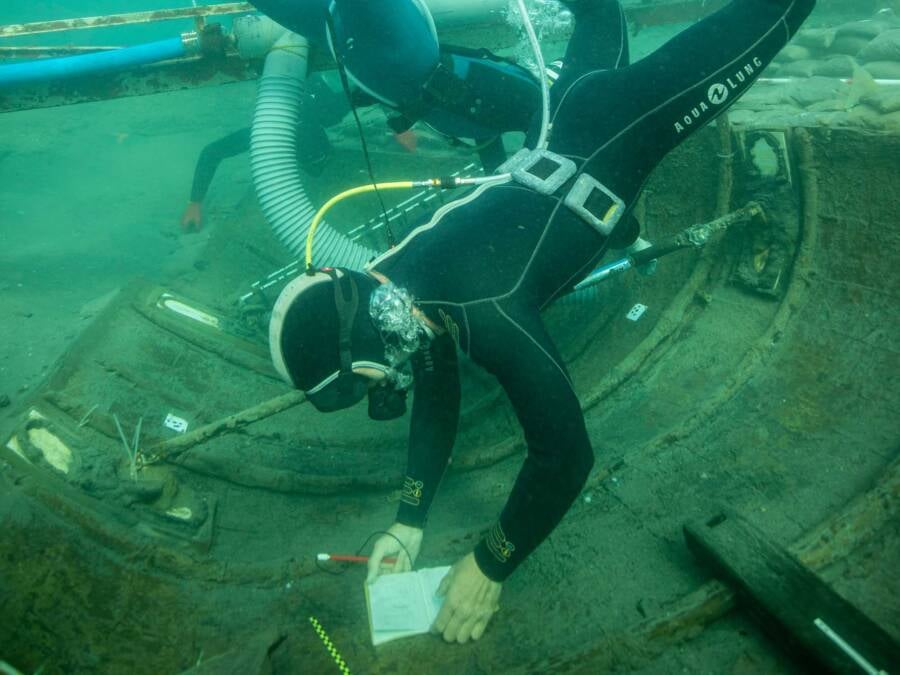The Mazarrón II was likely a Phoenician ship that sank around 600 B.C.E. and was almost immediately buried in sand. However, human activity has caused that sand to shift, prompting researchers to remove the ship from its watery grave.

Jose Antonio MoyaArchaeologists began excavating the wreckage of the Mazarrón II in September 2024.
Off the coast of southeastern Spain in 1994, archaeologists made a rare discovery: a largely intact Phoenician ship dubbed the Mazarrón II lying on the ocean floor. Over the past 30 years, the ship has remained a point of interest for researchers, eventually leading to a recent project to excavate the ship from its watery grave.
Between September and November 2024, a team of 14 specialists led by the University of Valencia’s Carlos de Juan worked to bring the Mazarrón II to the surface piece by piece. Now, those pieces are to be sent to a lab at the Museum of Underwater Archaeology in Cartagena for conservation and reconstruction — work which is expected to take at least four years.
In the end, though, researchers hope this project will shed new light on the Phoenician civilization, more than two and a half millennia after the Mazarrón II sank below the surface of the ocean.
The Sinking And Discovery Of The Mazarrón II

Jose Antonio MoyaResearchers going over the plans for the Mazarrón II excavation.
According to a statement from the University of Valencia, the Mazarrón II sank off the coast of Mazzarón, Spain sometime around 600 B.C.E. after a storm suddenly descended upon the area. The typically calm waters pulled the ship under, and just hours later it was buried beneath the sand. Not even its cargo could be salvaged before it sank.
“This sandy substratum is the chest that has preserved it to this day,” said Carlos de Juan. “What was, at the time, a great misfortune, is today a great blessing for archaeology.”

Jose Antonio MoyaThe Mazarrón II was found in 1994 off the coast of Spain.
The ship’s swift burial hid and preserved the wreckage for centuries beneath the sand until it was discovered in 1994, just over eight feet below sea level. Since then, researchers have been keen to examine the wreckage, though no efforts to bring it to the surface had been undertaken until now.
The reason for this recent action is human activity, which has disrupted the natural conservation that the sand had been providing.
“The protection by the sand that the wreckage enjoyed for centuries has changed in recent decades due to the anthropisation of the coastline,” de Juan explained.
“Coastal constructions have been erected without appropriate prior studies and the sea current has changed, thus created scenario in which the wreck must be urgently rescued. The wreckage can no longer remain where it is because its sand protection is now disappearing. The wreckage has survived for centuries, but now it is time to roll up our sleeves and ensure that we can continue to enjoy this asset of cultural interest.”
Salvaging The Mazarrón II For Preservation And Reconstruction
Realizing that time could be running out, researchers led by Agustín Diez, head of the UV Department of Prehistory, conducted a survey of the shipwreck to determine the state of preservation of the wood and develop a plan for extraction.
“From the data obtained on the actual state of the boat – the cracks and fissures – we have developed the best methodology to extract the wreck from the sea while ensuring its preservation and safety,” Diez explained.
That plan — to remove the wreckage from the sea in 20 parts, began in September 2024. Shortly thereafter, the University of Valencia released a video showing how researchers carried the wooden fragments back to the surface.
Now, with the ship’s pieces in hand, researchers will seek to uncover its origins, which may be Phoenician.
The Phoenicians were an ancient Semitic people who inhabited the coastal regions of the eastern Mediterranean, primarily in what is now Lebanon, as well as parts of modern Syria and Israel. Flourishing between 1500 B.C.E. and 300 B.C.E., they were renowned for their seafaring skills and established a vast network of trade routes and colonies across the Mediterranean, including notable cities like Carthage. Their major city-states — Byblos, Tyre, and Sidon — served as hubs of commerce and culture.
Despite their renown, little is known about their shipbuilding methods to this day. As such, ships like the Mazarrón II can offer unique insight into this little-understood aspect of Phoenician history.
“This wreck shows us what is close to us, what is local. It tells us about the mining and metallurgical activities of the Phoenicians, who settled in the southeast of the Iberian Peninsula, and about a cultural transmission of nautical technology that was previously unknown in Western Mediterranean areas,” de Juan said.

Jose Antonio MoyaThe preservation and reconstruction efforts are expected to last at least four years.
As CBS News reports, the excavation work concluded on Nov. 7, 2024, and the ship fragments have now been sent off to a lab for preservation.
The preservation and reconstruction work is expected to take at least four years, after which the ship will likely be displayed at the Museum of Underwater Archaeology in southern Spain.
After reading about the recovery of the Mazarrón II, learn about the rare Phoenician dye known as Tyrian purple. Then, learn about nine famous shipwrecks and the stories behind them.





